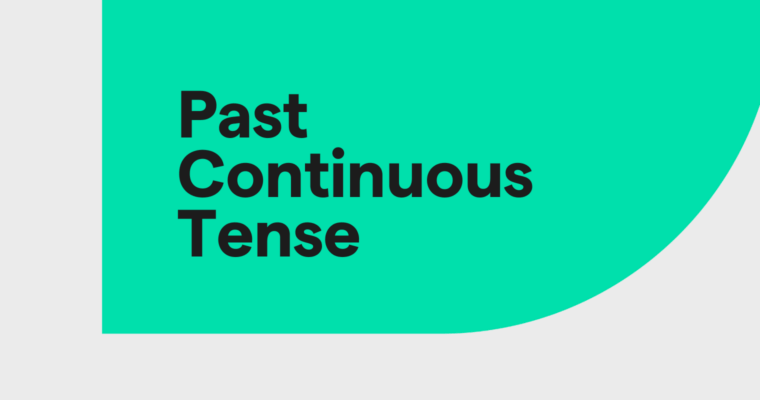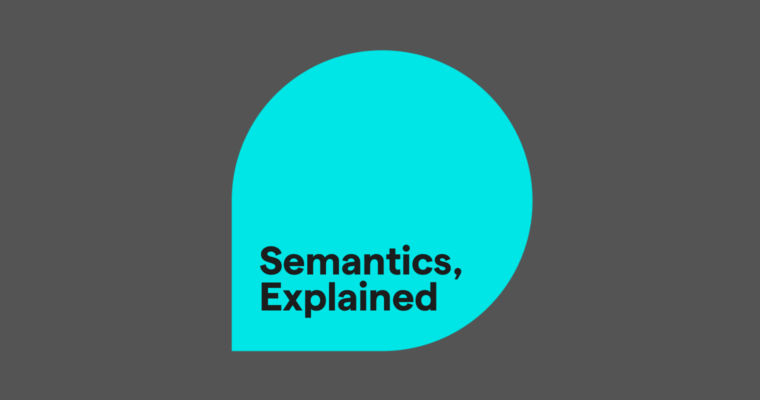
- The past continuous verb tense, also known as the past progressive, describes ongoing actions in the past: I was writing my research paper all night.
- The past continuous is formed almost identically to the present continuous tense; the only difference is that the verb to be appears in the simple past, rather than in the simple present, before the present participle of the main verb.
- The past continuous is useful for expressing that an action was ongoing at a specified time, for emphasizing the duration of something that occurred in the past, or for establishing context for something else in the past.
- Only dynamic verbs, which describe actions, can appear in the past continuous tense; stative verbs, which describe states of being, cannot.
Here, we’ll discuss the past continuous tense, review the rules and uses that apply to it, and provide plenty of past continuous tense examples.
Table of contents
What is the past continuous tense?
5 past continuous tense uses and examples
Common mistakes to avoid with past continuous tense
Past continuous vs. simple past tense
Past continuous vs. past perfect continuous tense
What is the past continuous tense?
The past continuous tense is a verb tense that shows an ongoing action that began and ended in the past.
Past continuous tense formula
The past continuous tense formula involves a simple past tense conjugation of to be (was or were) and the present participle of the main verb, the -ing form: was/were + [present participle].
This structure expresses actions that were in progress at a specific time in the past.
Keep in mind that you must conjugate to be to match the subject in number and person. Use was for the first-person singular subject, I, and for the third-person singular subjects he, she, and it.
Use were for all plural subjects, the singular second-person subject (you), and the singular third-person subject (they).
Verbs you cannot use in the past continuous tense
There is one category of verb that cannot be used in any continuous tense, including the past continuous. These are called stative verbs, also known as state-of-being verbs. Stative verbs describe intangible states or feelings that can’t be directly observed or measured in terms of progress.
Many stative verbs describe states of mind, such as opinions, needs, and awareness. Here are some of the most common examples of stative verbs:
- believe
- dislike
- hate
- involve
- know
- like
- love
- need
- prefer
- realize
- seem
- understand
- want
Because stative verbs describe things that exist rather than things that occur, the differentiation we naturally make with dynamic verbs—between something that happens in an ongoing way and something that happens once or with a definite start and finish—doesn’t apply to them. Because of this, they sound unnatural in a continuous tense. Avoid using the above verbs in the past continuous—use them in the simple past instead.
Some verbs have both stative and dynamic meanings. For example, to think has a stative sense (to hold a specified opinion) as well as a dynamic one (to perform mental activity):
- Stative: I think you’re right.
- Dynamic: I was thinking about the problem when you called.
5 past continuous tense uses and examples
1 Expressing an action that was interrupted
One of the most common uses of the past continuous tense is to show a past action that was interrupted by another past action. These are often complex sentences featuring subordinating conjunctions like when, while, before, after, until, or whenever.
Put the action that was interrupted in the past continuous tense and the action that interrupts it in the simple past.
2 Expressing an action that was ongoing at a specified time
When you mention a specific time in the past, use the past continuous tense if the action started before that time and continued afterward. If the action begins at the time mentioned, use the simple past instead.
3 Expressing an action that was habitual
Use the past continuous tense to talk about an action that happened frequently in the past but does not continue in the present. In this usage, the verb often appears with adverbs and adverb phrases that refer to frequency, like the following:
- all the time
- always
- constantly
- continuously and continually
- the entire time
- forever
- now and then
- occasionally
- often
- perpetually
- rarely
- seldom
4 Emphasizing the duration of a past action
You can also use the past continuous tense to make a point about how long an action took. This usage usually partners with adverb phrases that express duration, such as these:
- all morning/afternoon/evening
- all day/night
- all week/month/year
- for hours/days/weeks/months/years
- the whole time
5 Establishing context for another past event
When telling an anecdote or a story, you can use the past continuous tense to set the scene or describe what was happening before the main action you’re narrating began.
Common mistakes to avoid with past continuous tense
Understanding the past continuous tense can be tricky due to its specific rules and nuances. Here are some things to watch out for:
Using the past continuous when the simple past is called for
The past continuous is sometimes overused unnecessarily for short, discrete actions.
Using stative verbs in the past continuous
As we saw above, stative verbs shouldn’t be used in any continuous tense, including the past continuous.
Omitting time markers
Because the past continuous is used to signify that a past action was happening continuously at a specified time, it’s important to make sure that that time is clear to someone reading your sentence.
Sometimes, the time context is established by earlier sentences. If it isn’t, use time markers—adverbs and adverb phrases that indicate when the action was ongoing.
Conjugating to be incorrectly
Maintaining subject-verb agreement is important in the past continuous, just like in all the other tenses. Make sure you’re using the correct form of to be, including in negative constructions.
Conjugating an interrupting action incorrectly
When using the past continuous to describe an ongoing action that was interrupted by another action, the interrupting action itself should be in the simple past, not the past continuous.
Past continuous vs. simple past tense
The past continuous is often confused with the simple past tense—this might be because some sentences can use either.
The simple past is generally more commonly used. However, there are subtle differences worth mentioning.
When you are constructing a complex sentence with an independent clause that describes one action and a subordinate clause beginning with a time-related subordinating conjunction (such as since, until, as long as, as soon as, before, after, when, as, or while) that describes another action, keep these distinctions in mind:
Use the past continuous tense for the verb in either clause to convey that that action was already happening before the other action began:
Use the simple past in both clauses to convey the sequence in which two discrete actions occurred:
Likewise, when you use a time adverb (either single-word or phrasal) to modify a verb, putting the verb in the past continuous tense means its action started before the time expressed by the adverb and was ongoing at that time, whereas putting it in the simple past means the action started at that time.
Here, the speaker started eating lunch before noon and was still eating at noon:
Here, the speaker started eating lunch at noon:
Past continuous vs. past perfect continuous tense
Another potentially confusing subject is the difference between the past continuous tense and the past perfect continuous tense. Both of these can show a past action interrupted by another action. However, the major difference is this:
- With the past continuous, the action continues after the interruption.
- With the past perfect continuous, the action stops with the interruption.
In this example, which uses the past continuous tense, the cat continues to nap after the owner returns:
Whereas in this example, which uses the past perfect continuous tense, the cat was napping but stopped when the owner returned:
Past continuous tense FAQs
What does the past continuous tense do?
The past continuous tense shows an ongoing action that began in the past.
How is the past continuous tense formed?
The past continuous tense is formed with a past tense conjugation of to be and the present participle (the -ing form) of the main verb.
When should you use the past continuous tense?
Use the past continuous tense to show a past action that has been interrupted or a habitual action that no longer occurs. You can also use it to emphasize the duration of time an action took or to set the background for a story.
Can you use the past continuous without a specific time?
The past continuous must be used with some reference to time (i.e., some answer to the question “When?”). However, that time does not have to be explicitly identified with a date or year in every sentence.
For example, it can be relative to another past event (She was singing beautifully when I last saw her) or refer to a period of time defined in relation to another point in the past (The first year he lived in Boston, he was still driving back and forth to Providence every weekend).
How does the past continuous work with modal verbs?
When combined with modal verbs, the past continuous describes actions that were ongoing in the past but influenced by possibility, necessity, or ability.





